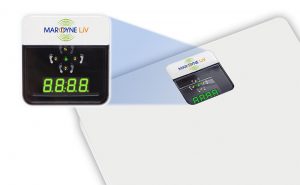The research behind low-intensity vibration
Bones and muscles respond to dynamic loading and forces. Apply them or take them away and the tissue will respond accordingly
1. Musculoskeletal deconditioning, that can occur through aging or disability, increases the risk of fractures. Exercise, such as walking and running is known to help maintain a good muscle and bone health. But these strategies may not be possible for frail, disabled or more elderly people. Low-intensity vibration, an acceleration of less than 1 gravity (g=acceleration of 9.81m/s2 and frequency greater than 30Hz) is a safe approach to this problem
2.Bones respond to both large low frequency and small high-frequency forces and grow more bone as a result. Taking away such forces increases the resorption of bone
3. Muscle is similarly affected. As we age the faster contracting muscle fibers (10-50Hz) decline proportionately
4. This can lead to greater musculoskeletal instability and poorer quality. LIV acts as an alternative to these high frequencies small sized forces
5. In scientific studies at a cellular level, LIV has been shown to stimulate bone formation cells (osteoblasts), while reducing production of fat cells
6. It also reduces the activity of bone resorption cells (osteoclasts).
LIV and Musculoskeletal conditioning
There are a number of human trials that evaluate the use of LIV as we age. In a placebo controlled trial in post-menopausal women LIV was shown in the women with high compliance to reduce loss of bone mineral (BMD) in the femoral neck, (Rubin 2004). In pre-menopausal women using LIV over 12 months, bones (hip and spine) and muscle in the lower back showed increases using LIV, (Gilsanz 2006). In adults with Thalassemia six months of LIV use showed significant increases in whole body bone mineral content (BMC) and BMD, (Fung 2012).
A large study in 710 women over 60 years using LIV for 18 months, showed reductions in falls and fractures in the group using LIV compared to controls, (Leung 2014). There were significant benefits in muscle strength and balance and some bone benefit using LIV. The study concluded that LIV is effective in reducing falls and associated injuries.
Bone loss in Children
LIV provides a safe non-pharmacological intervention for children and young people with osteoporosis. Children with disabling conditions, including cerebral palsy used LIV for six months and showed 18% benefit in tibial bone quality compared to control (Ward 2004). A second study showed increases in cortical bone strength after six months of LIV use, (Wren 2010). This is important to reducing fracture risk. In a more recent placebo controlled study in boys with Duchenne muscular dystrophy very significant bone improvements were seen from LIV use over 12 months, (Bianchi 2013). In girls with adolescent idiopathic scoliosis LIV was used for 12 months and significant BMD increases were shown in the femoral neck as well as increase in lumbar spine bone.
Is it safe?
The low-intensity vibration signal delivered by LivMD is considered safe* for up to 4 hours of exposure per day according to?the International Safety organization (ISO) threshold for human tolerance of vibration, ISO-2631.?OSHA (The Occupational Safety and Health Administration) and the ISO have come out with specific advisories on duration?thresholds for human tolerance, which is dependent on both frequency and duration. In the figure from ISO-2631, it shows
time (horizontal), and acceleration (vertical), with the dark ?hockey-sticks? indicating how much time you can safely be?exposed to these signals.
Ideal uses for Low Intensity Vibration treatment
To treat and prevent osteoporosis ? by building bone density.
To reverse the effects of physical inactivity in people who are disabled, ill or convalescing ? by building up core muscles and encouraging blood circulation.
To help the elderly ? by addressing age-related muscle weakness, improving posture and balance to helping in falls prevention.
To redress the effects of degeneration of joint, cartilage, bone and nerve tissues (commonly seen in osteo arthritis and Parkinson?s Disease) ? by easing pain and improving posture, stability, equilibrium and balance.






